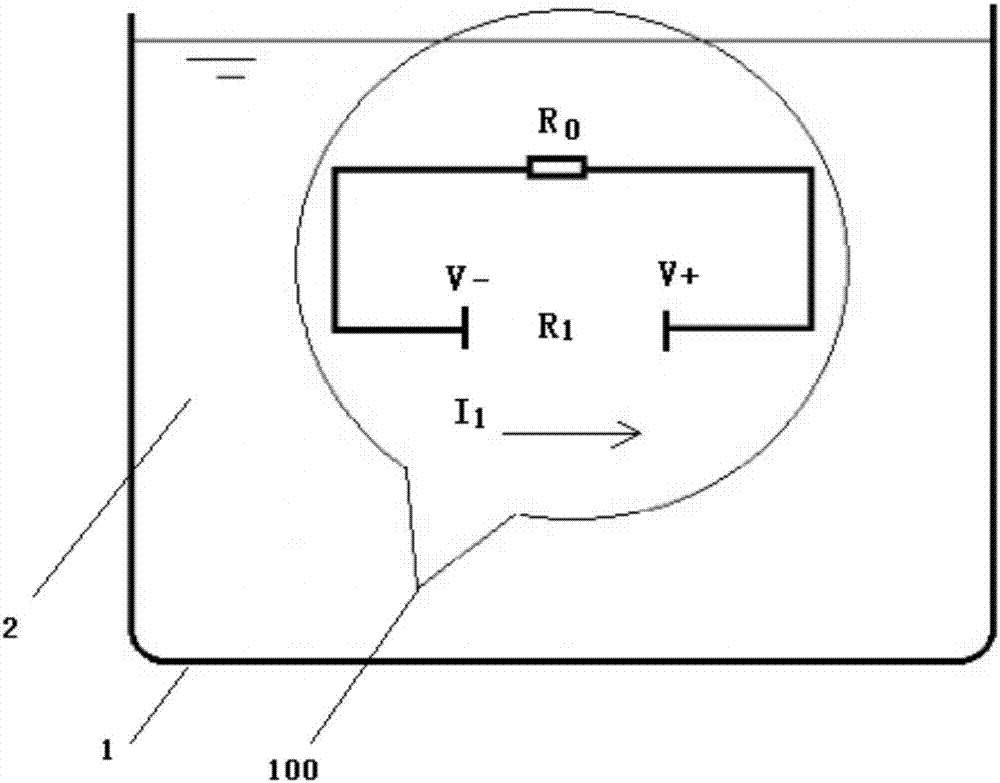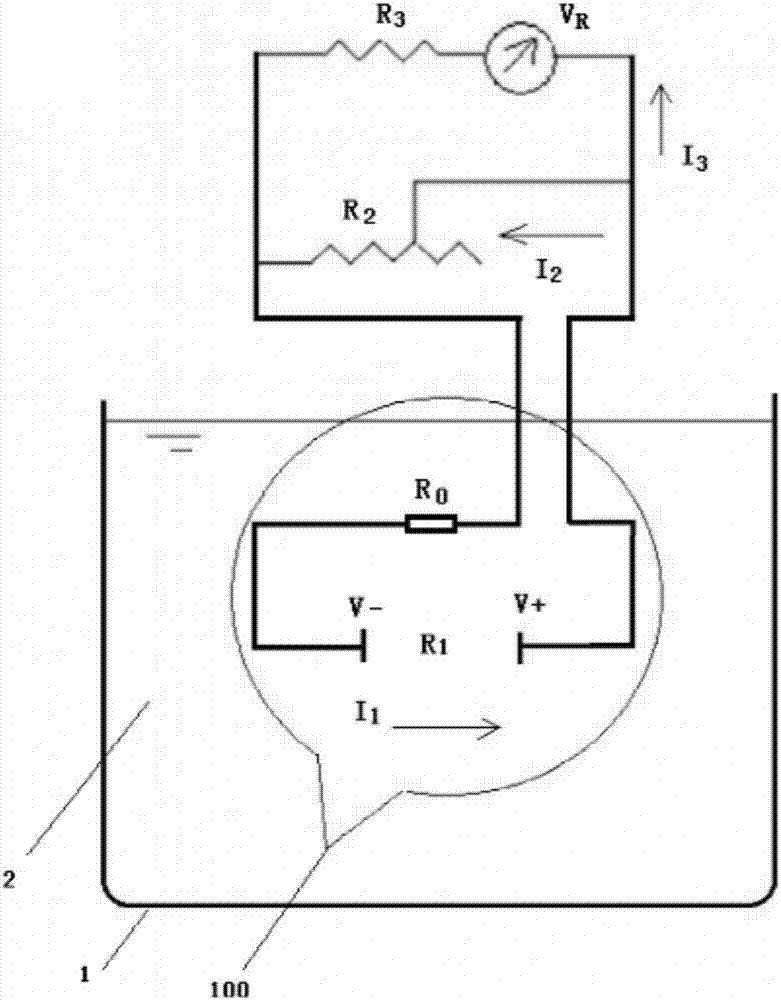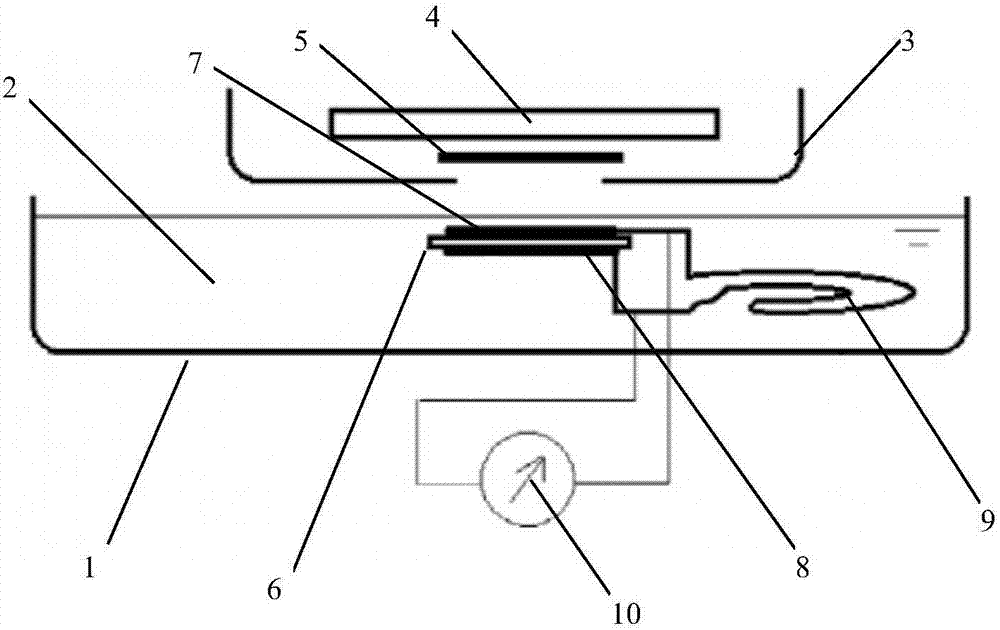Method for measuring minute current in circuit consisting of electrified body in solution and solution
A technology for tiny currents and charged objects, applied in the direction of measuring current/voltage, measuring electrical variables, measuring devices, etc., can solve problems such as inability to measure and distinguish, difficult to measure, and difficult to measure current
- Summary
- Abstract
- Description
- Claims
- Application Information
AI Technical Summary
Problems solved by technology
Method used
Image
Examples
Embodiment Construction
[0021] The specific embodiments of the present invention will be further described below in conjunction with the accompanying drawings. It should be noted here that the descriptions of these embodiments are used to help understand the present invention, but are not intended to limit the present invention. In addition, the technical features involved in the various embodiments of the present invention described below may be combined with each other as long as they do not constitute a conflict with each other.
[0022] A method for measuring tiny currents in charged bodies in solution, comprising the steps of:
[0023] S1. Connect a variable resistor in series in the measured circuit to form a measurement circuit;
[0024] S2. Connect a voltmeter in parallel to the variable resistor to obtain the voltage value at both ends of the variable resistor;
[0025] S3. Obtain the microcurrent value on the charged body according to the calculation formula, the calculation formula is as...
PUM
 Login to View More
Login to View More Abstract
Description
Claims
Application Information
 Login to View More
Login to View More - R&D
- Intellectual Property
- Life Sciences
- Materials
- Tech Scout
- Unparalleled Data Quality
- Higher Quality Content
- 60% Fewer Hallucinations
Browse by: Latest US Patents, China's latest patents, Technical Efficacy Thesaurus, Application Domain, Technology Topic, Popular Technical Reports.
© 2025 PatSnap. All rights reserved.Legal|Privacy policy|Modern Slavery Act Transparency Statement|Sitemap|About US| Contact US: help@patsnap.com



